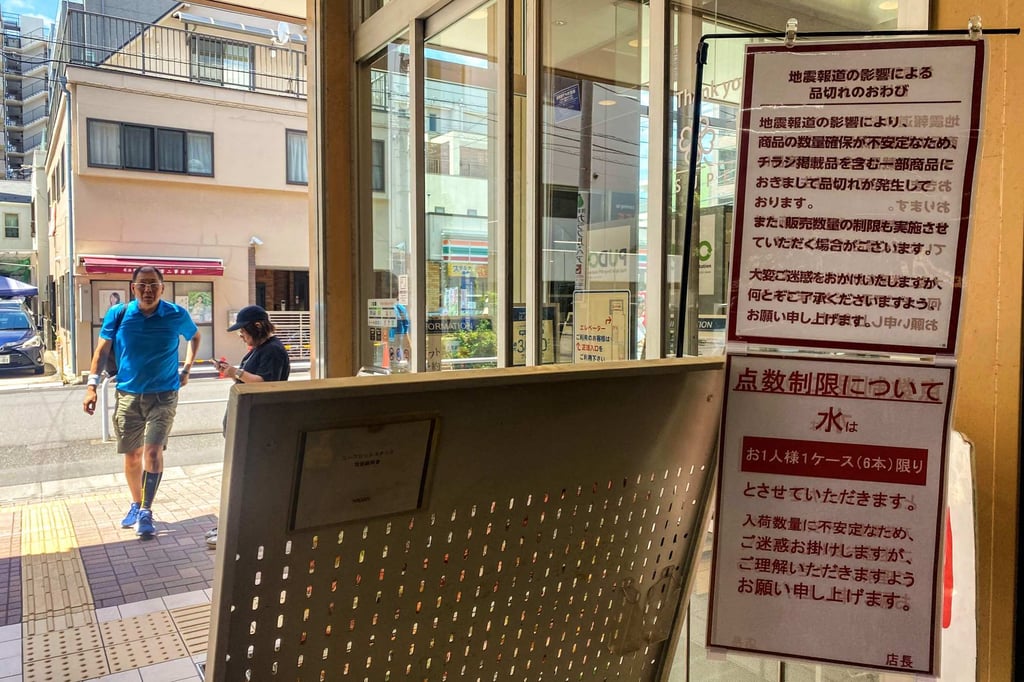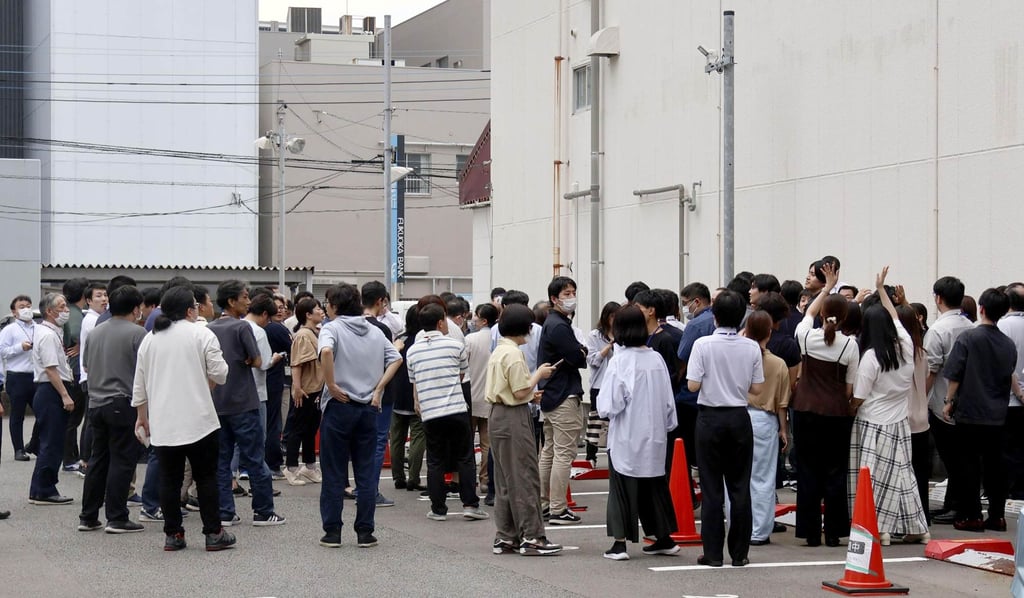Japan urged to provide earthquake tips to tourists amid surge in cancellations

“I do not think enough information and advice is available in other languages for foreign visitors,” said Masaru Takayama, president of Kyoto-based Spirit of Japan Travel.
“At the moment, things like hazard maps for earthquakes, tsunami, landslides and so on are only available in Japanese in most towns because they have been designed for residents, not tourists,” he told This Week in Asia.
As a result, foreign nationals who do not speak or read Japanese will not understand what to do in the event of a major natural disaster, the evacuation routes they would need to follow or where they can get medical treatment or find shelter, according to Takayama.
“There is a complete gap in information and the national and local governments need to fill it because this directly affects the entire tourism industry,” he said.
Takayama on Tuesday chaired a meeting called specifically to bolster protocols for dealing with a disaster, including confirming the locations of staff of his company and travellers, ensuring their well-being and, if required, overseeing their evacuation and any medical treatment they may need.
The Japan National Tourism Organization operates Japan Safe Travel, an online platform that provides regular updates via social media on natural disasters and safety tips for visitors. Such information should also be available in hard copies at locations across Japan to help foreign tourists, Takayama said.
“I appreciate that it is extra work for local governments, and they are often short of resources, but this is something that they need to start providing,” he said, adding that he was confident ongoing concerns over the possibility of a major disaster would prompt local authorities into action.
“It may take a little longer in inland areas and the mountains, which will be less affected by a tsunami, but it is very important that this starts to happen in coastal areas and big cities that would be most affected by a disaster,” he added.
There is evidence that concern over seismic activity is putting foreign travellers off visiting Japan, with the Korea JoongAng Daily reporting a surge in cancellations to destinations in Japan. Similarly, Chinese tourists appear to be avoiding Japan for their summer breaks, with the Global Times reporting that more travellers are cancelling hotel bookings and flights to the country.
In June, around 70,000 South Koreans visited Japan, while foreign arrivals totalled a record 3.13 million.

Ashley Harvey, a travel marketing analyst who has worked in Japan’s travel sector for more than 15 years, said companies should have emergency action plans to deal with earthquakes and practise them regularly. National and local governments should also provide useful tips in several foreign languages, notably Chinese and Korean, on dealing with a natural disaster, Harvey said.
“The information needs to be readily available to anyone who gets caught up in a disaster and that probably also means having it available in hard copies at hotels, museums and anywhere else that tourists are likely to be because we must remember that electronic communications were lost in a large part of northeast Japan in 2011,” he said.
“All bets are off in the event of the ‘big one’ striking, but I think the best course of action for foreign visitors would be to copy what the Japanese are doing,” he said. “If the information is not there in their language, then do what the hotel staff or local people are doing because they have prepared for natural disasters all their lives, and they will know what to do.”
Immediately after the August 8 quake, the Japan Meteorological Agency issued its first-ever megathrust earthquake alert for the Nankai Trough. Concerns were heightened the following day by a magnitude 5.3 quake off Kanagawa Prefecture, south of Tokyo, and another 6.8 tremor on August 11 in Hokkaido. While seismologists say the two subsequent quakes were unlikely to be directly linked to the Nankai Trough, they were in tandem with a recent spike in seismic activity in Japan.

On January 1, a magnitude 7.6 earthquake and tsunami devastated large parts of the Noto peninsula, on the north coast of Japan, killing 318 people.
Government agencies are calling on the Japanese public to be prepared for a disaster, instructing residents of areas that are considered to be most at risk to ensure they have sufficient supplies of food, water and first aid kits. They are also reminded to check evacuation routes and locations of emergency shelters.
Local governments in 29 prefectures identified as most susceptible to the effects of a seismic incident in the Nankai Trough have started preparing evacuation centres, while several beaches have been closed. Long-distance bullet trains are running at reduced speeds, and some local railway lines are closed temporarily.
Experts have suggested that a magnitude-9 quake in the Nankai Trough could trigger a tsunami 10 metres high that could hit beaches in as little as three minutes. Depending on the epicentre, a tsunami could also impact some of Japan’s largest cities, including Osaka, Kobe, Hiroshima and Fukuoka.
Scientists have said there is an 80 per cent chance of a large quake in the Nankai Trough in the next 30 years.
Related
Turkish Airlines and Qatar Airways Suspend Mogadishu Flights Following US…
Home » Airlines News of Qatar » Turkish Airlines and Qatar Airways Suspend Mogadishu Flights Following US Embassy Terror Alert, Raising Security Concerns at
Local tourism destinations grow fast
Men sit at the Doha Corniche backdropped by high buildings in Doha on March 3, 2025. Photo by KARIM JAAFAR / AFP DOHA: Local tourism destinations are g
Hajj, Umrah service: Qatar Airways introduces off-airport check-in for pilgrims
Image credit: Supplied Qatar Airways has introduced an off-airport check-in
IAG, Qatar Airways, Riyadh Air, Turkish Airlines, Lufthansa & more…
Turkish Airlines – a Corporate Partner of the FTE Digital, Innovation & Startup Hub – is charting a course to rank among the top 3 global airlines for












